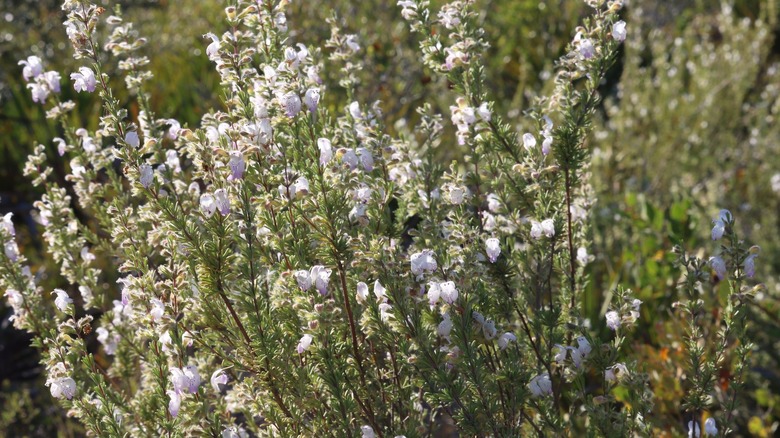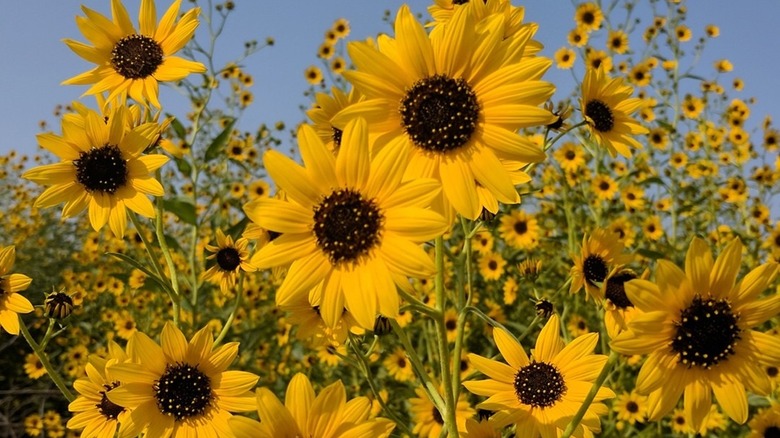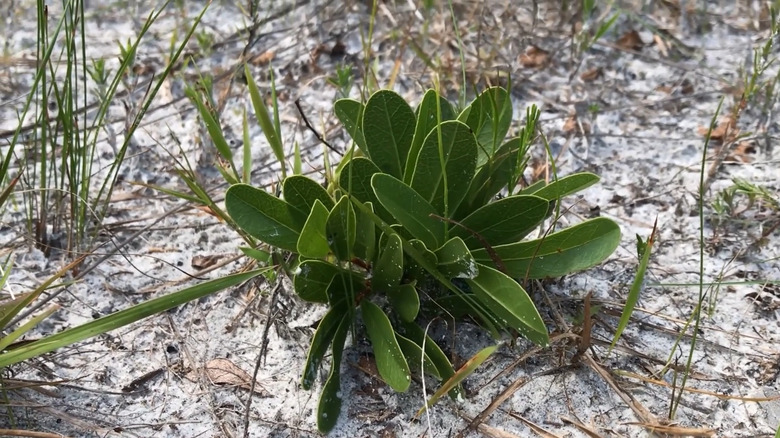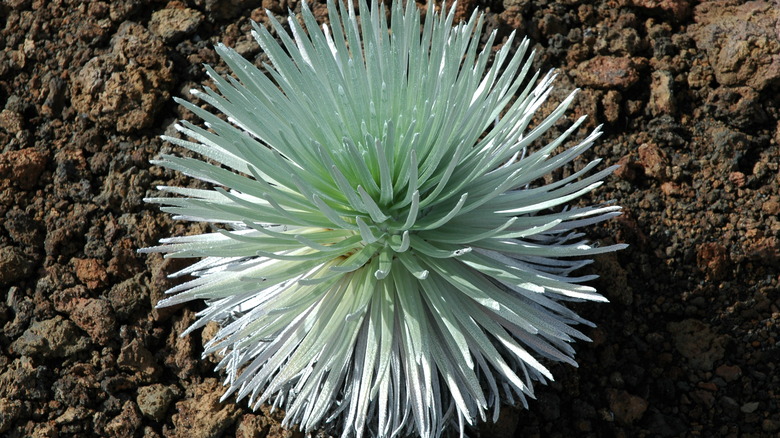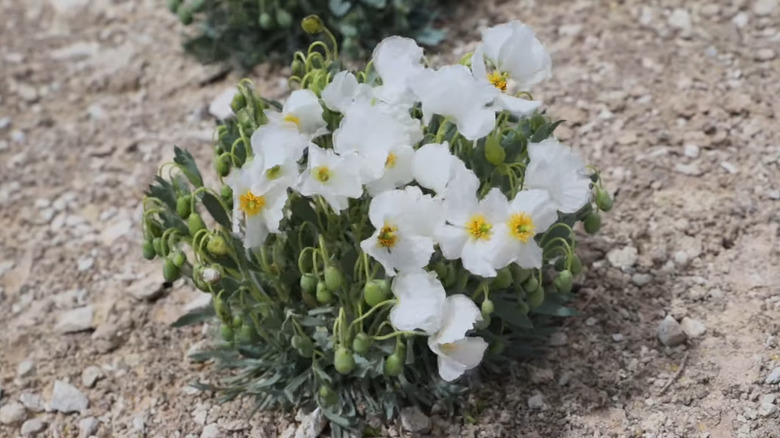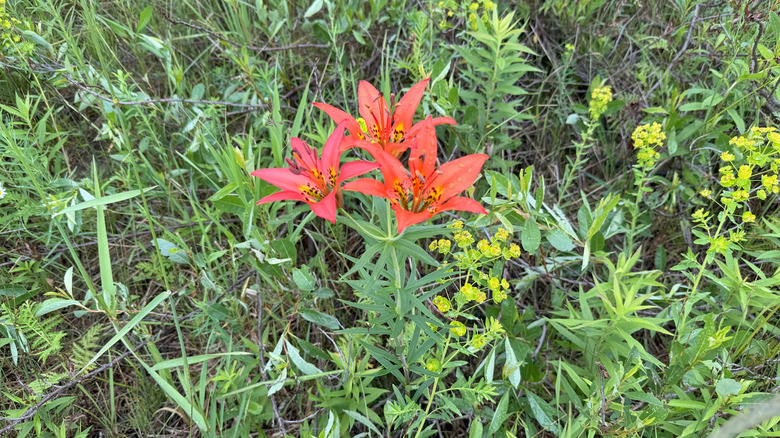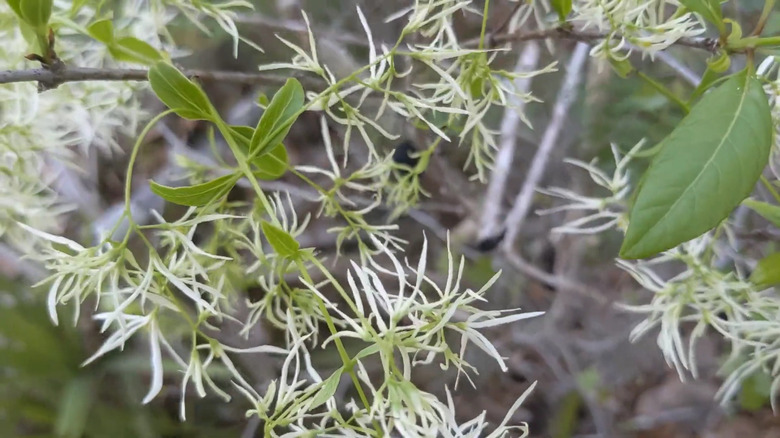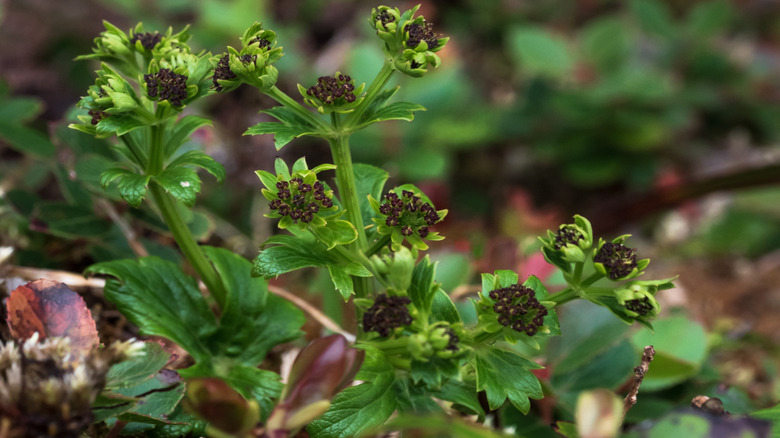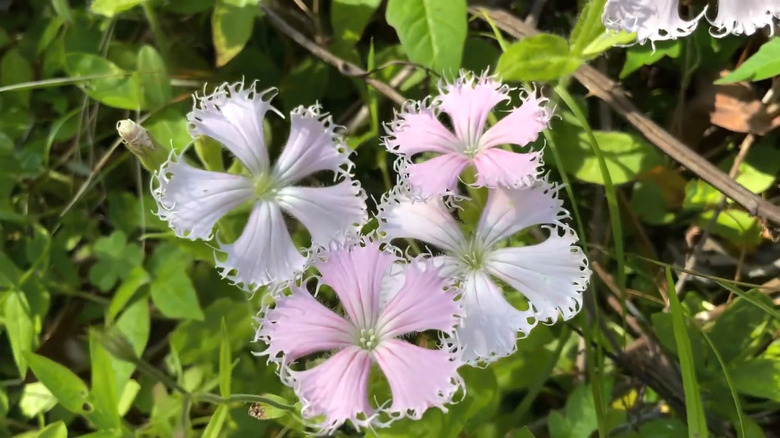15 Beautiful American Plants On The Brink Of Extinction
America is filled with beautiful plants that may face extinction in the future, with over 900 listed as endangered or threatened by the U.S. Fish and Wildlife Service. One 2019 study in the journal Nature Ecology & Evolution found that in the last 250 years, nearly 600 plants have reached extinction. This sobering news shows why it's so important we recognize beautiful American plants on the brink of disappearing from the world completely, in hopes we can save them.
The "endangered" label means that a plant is in danger of extinction in a major part of its range. "Threatened" is less severe, but it means that current numbers show the plant may reach endangered status, so more conservation is crucial. In addition to federal designations, plants can be labeled as endangered or threatened by an individual state.
Plants may go extinct for a variety of reasons. One of the most prevalent factors is the loss of habitat, as the development of land into cities, farms, and other human-focused centers reduces the plant's footprint. Other factors include pests or diseases, over-harvesting, and the loss of crucial pollinators, especially as the plants' habitat gets smaller and smaller. Some plants may be slow-growing and unable to sustain a healthy population after being harvested. While multiple laws exist to prevent taking plants from public lands, the fact remains that people may still retrieve them for their own use. While there may be some endangered plants you can grow in your own garden, others are more limited.
Ko'oloa'ula
Native to the state of Hawaii, specifically Maui, Lana'i, Hawaii Island, and Oahu, Ko'oloa'ula (Abutilon menziesii) is a perennial shrub featuring silvery leaves with pink to red flowers. Its habitat consists of low-lying areas, including eroded slopes, dry forests, and coastal plains. In 1985, the U.S. Fish and Wildlife Service listed its status as endangered, and efforts are ongoing for propagation. The Hawaii Division of Forestry and Wildlife engaged in the first outplanting to reintroduce it into the wild in 2004. Because of its rarity and protected status, Ko'oloa'ula seeds and cuttings are not easy to legally obtain.
False rosemary
Endemic to Florida, false rosemary or shortleaf rosemary (Conradina brevifolia) was federally classified as endangered in 1993. This member of the mint family grows in scrub areas, displaying white to lavender flowers dotted with light traces of purple dots, with aromatic leaves. Its range is limited to the Polk and Highland counties of central Florida.
Pecos sunflower
The Pecos sunflower (Helianthus paradoxus) is also known as the puzzle or paradox sunflower. Like other sunflowers, it grows tall and produces flowers that feature a disc center surrounded by yellow petals. An annual, it's currently found in New Mexico and Texas. Today, it's listed as threatened by the U.S. government due to habitat loss, but efforts to protect and increase the population of this stunning, lesser-known flower are underway.
Beautiful pawpaw
Also an endangered plant endemic to Florida, the beautiful pawpaw or pretty false pawpaw (Deeringothamnus pulchellus) is a captivating little green gem you might miss in dry, sandy areas. It went on the list in 1986 and is quite small, topping out at only about 1 foot tall. Often found living on the side of roads, in ditches, and similar areas, it pops up only in Florida's Charlotte, Lee, and Orange counties. In 2025, conservation efforts for this pawpaw in Cape Coral and Pine Island show promise.
Haleakalā silversword
The impressive Haleakalā silversword (Argyroxiphium sandwicense subsp. macrocephalum), native to Hawaii, faces endangerment due to visitors breaking off a piece as a souvenir. Climate change and resulting lowered precipitation also pose a threat to this interesting plant, which may live for more than 90 years. Despite this long lifespan, the plant only flowers and produces seeds once. Growing on Maui's Haleakala crater, it features an incredible array of up to 600 seedheads at that time. Some visitors climb high to find it, captivated by its fleeting beauty.
Swamp pink
Swamp pink (Helonias bullata) is known for its spiky pink flowers with blue anthers (pollen tips). Native to the coastal Atlantic area, its range extends as far south as Georgia. The largest population of this attractive flower is in New Jersey. A perennial that grows in wetland areas, it flowers between March and May, attracting visitors to its alluring bubble-gum pink blooms with 30 to 50 flowers on a stalk capable of growing 3 inches high. Habitat loss from wetland drainage and development greatly contributes to its diminishing numbers, so since 1988, it's been classified as a threatened species.
Dwarf bear-poppy
The dwarf bear-poppy (Arctomecon humilis) is a beautiful yet endangered flower. One of the earliest species to appear on the federal list in the '70s, the dwarf-bear poppy can only be found in one spot in Utah, living in shrub habitats around the city of St. George. With leaves resembling a bear's claws, it grows in clumps, with four to six petaled white flowers with yellow stamens. Although the dwarf-bear poppy is still threatened by development, seed collection efforts have been ongoing, with over 21,000 collected between 1975 and 2013 alone.
Presidio clarkia
The beautiful annual pink evening primrose Presidio clarkia (Clarkia franciscana) is found in California, where it grows in only two locations, the Oakland Hills and its namesake, San Francisco's Presidio National Park. Thriving in poor soil, it grows in grasslands and on bluffs, showcasing pink to lavender flowers shaped like a wedge. Unfortunately, it's subject to destruction by bicycles and pedestrians, but local authorities have taken measures to reduce this. Still, it remains on both the federal and state endangered lists to this day.
Wood lily
The native perennial wood lily (Lilium philadelphicum) is found throughout the United States and appears on multiple states' lists of endangered plants, while not bearing the same recognition by the federal government. Maryland classifies it as an endangered extirpated species, meaning researchers believe it's disappeared from the state's wild populations. This flower grows in dry forests, prairies, and meadows. Its blooms, consisting of red to orange petals, often entice wildflower lovers. Habitat loss and deer browsing have threatened the species' survival in some regions.
Alabama pitcher plant
The carnivorous Alabama canebreak pitcher plant (Sarracenia rubra ssp. alabamensis) is an exceedingly rare plant and an intriguing sight in the wild. To feed, it entices unsuspecting insects with a sweet nectar at the top of its tall, slender tube, or pitcher. Once the insect enters the pitcher to feed, it's trapped in the pitcher, where it's digested. The brightly-colored maroon flowers bloom in spring, making it as beautiful as it is deadly to insects. You can only find the Alabama canebreak pitcher plant in two counties within the state, and much of its habitat has been destroyed by various activities, including development.
Pygmy fringe-tree
A perennial shrub, the pygmy fringe-tree (Chionanthus pygmaeus) is a long-living endangered plant in Central Florida. It lives in open, sandy areas, often alongside myrtle oak (Quercus myrtifolia) or other similar species, growing 4 feet high with fragrant white blooms. While large sections of the pygmy fringe-tree's Florida habitat faced destruction from citrus growing and housing development, efforts with seed collection and germination have been successful in recent years.
Crenulate lead plant
The rare but beautiful crenulate lead plant (Amorpha crenulata) is a semi-deciduous shrub native to Miami, Florida and federally recognized as endangered. Like other lead plants, its name originates from an old belief that it grew near the presence of lead in the ground. The crenulate lead plant can grow up to 5 feet tall. It's characterized by large flower spikes measuring 6 to 8 inches, blooming in shades of white to lavender with orange anthers. Its habitats include pinelands and vacant lots, but it faces threats from invasive plants as well as sea level rise.
Michigan monkey flower
The only plant solely endemic to Michigan, the Michigan monkey flower (Mimulus michiganensis), is protected on both the federal and state levels as an endangered species. This is a beautiful yellow bloom with flowers similar to a snapdragon (Antirrhinum majus). It grows in clumps along the lake bluffs and seeps of the Grand Traverse and Mackinac Straits areas in northern Michigan. Facing habitat loss, the Michigan monkey flower is now a rare sight.
Purpleflower blacksnakeroot
Another gorgeous endangered plant in Hawaii is purpleflower blacksnakeroot (Sanicula purpurea). This herb lives largely on slopes on Oahu and in bogs on Maui. Facing destruction by invasive plants and the state's feral pig populations, purpleflower blacksnakeroot has large leathery leaves divided into three to seven lobes each. The leaves' shape resembles an egg or kidney, blooming with purple or cream flowers. Exact numbers of the global population are under review, but fewer than 150 plants are estimated to be present in Hawaii.
Fringed campion
With its fringed pink petals resembling lace edges, the fringed campion (Silene polypetala) is a stunning perennial herb. Native only to Florida and Georgia, it's an endangered species on the federal level thanks to logging, erosion, and competition from invasive plants. The fringed campion grows in small mats with hairy stems measuring 4 to 16 inches high. It enjoys moist environments such as stream banks and river bluffs.


